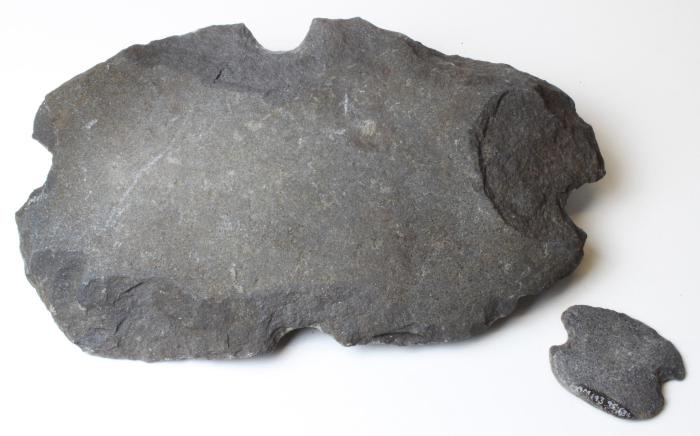Anchor — Kicaq

Before the availability of metal tools, Alutiiq people fashioned anchors from large cobbles. Craftsmen selected a relatively flat, rectangular rock and shaped it by chipping. A stone anchor found in Karluk is 10 inches long and weighs about six pounds. The edges of the stone were chipped to form a long oval and then notched in four places—in the center of both ends and on the top and bottom edge of the stone. The notches provided a place to tie a line where it would not slip off.
Stone anchors were a giant version of Alutiiq net sinkers, the palm-sized notched cobbles people used to weigh the bottom edge of their nets. The similarities between these tools are not a coincidence, as stone anchors helped to secure nets.
Alutiiq people set nets to capture herring, birds, and even seals. Historic sources indicate that seal nets were made of sinew cord and that they were large—about 350 feet long and 35 feet wide. Like modern fishing, they had floats tied to the upper edge and stone sinkers along the bottom. These probably included a sturdy stone anchor. Working quietly from kayaks, seal hunters spread the net in an area where seals were resting on the land nearby. When the net was in place, the hunters yelled to wake the seals and scare them into the water. Seals that became tangled in the net could be dispatched and towed home for dinner.
